In fantasy, the horse plays a vital role. They carry our heroes across continents and into battles. Some mounts are beautiful and fair, whereas others are rugged and hardy. But all the same, readers love them.
When it comes to creating fantasy horses, however, it’s important to get things right, or else endure the wrath of the equestrian gods.
So below, we’ll take a detailed look at the mechanics of horse riding. We’ll look at some famous fictional horses from the fantasy genre.
And we’ll take a look at the smaller details, like coming up with names.
Choose A Chapter
- The Influence Of The Fantasy Horse
- Examples Of Horses In The Fantasy Genre
- Horses In Mythology
- What Is The Anatomy Of A Horse?
- The Basics Of Horse Riding For Fantasy Stories
- Types Of Horses
- Treating A Fantasy Horse Like A Character
- If You’re New To Horse Riding, You’re Going To Fall
- Each Horse Has Its Own Personality
- How Do You Describe A Fantasy Horse?
- Fantasy Horse Name Generator
- More Fantasy Writing Guides
The Influence Of The Fantasy Horse
I don’t think anything fantasy-related has stirred me so much as the Ride of the Rohirrim. Faced with a gargantuan orc army, the fearless Riders of Rohan leapt into the fray to break the siege of Minas Tirith.
Seeing all those galloping feet hurtling over the rows of pikes and spears still brings a tear to my eye. Such is the power and influence of our noble fantasy horses.
“Arise, arise, Riders of Theoden! Fell deeds awake, fire and slaughter! Spears shall be shaken, shields shall be splintered. A sword day, a red day, ere the sun rises! Ride now, ride now! Ride for ruin and the world’s ending!”
King Theoden, The Return of the King
Horses play iconic roles in fantasy stories. They fearlessly carry our heroes into battle, face down dragons, Nazgul and all manner of fell beasts, and take our characters across countries and continents to save the world.
But there’s much more to a horse than them being just a means of transportation. Great care ought to be adopted when featuring them in fantasy novels, lest you draw the wrath of the horse gods—Odin, I’m looking at you.
Below, we’ll look at types of horses (particularly from the Middle Ages), how to come up with horse names, ways of describing them, horses in mythology, fantasy horse art, and how this can all tie in with your worldbuilding process.
Examples Of Horses In The Fantasy Genre
I’m sure a dozen or more horses have sprung into your mind whilst reading this so far. Here are some of the most famous horses in fantasy.
Shadowfax – The Lord of the Rings
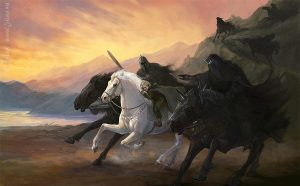
Perhaps the most famous of all fantasy horses, Shadowfax is the legendary Lord of Horses.
Not only is this creature beautiful and regarded as the fastest horse in all of Middle Earth, but he also has impeccable hearing. Either that or Gandalf has some insane whistling ability that Tolkien didn’t detail (unlike everything else, including Tom Bombadil and his gods-damned forest)
Bela – Wheel of Time
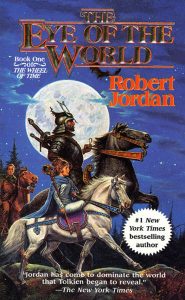
Fans of Robert Jordan’s The Wheel of Time series will no doubt be familiar with Rand’s heroic mount, Bela.
Once belonging to his adopted father, Bela carries Rand a serious distance on his adventure, as well as into battles.
Such is the influence of Bela that some fans have even hypothesised that she is, in fact, the Creator.
The Silver – Game of Thrones
As we’ll see below, horses play a big role in George RR Martin’s Game of Thrones world.
Perhaps the most significant of horses in the books (and series) is Daenerys Targaryen’s Silver, gifted to her by her husband Khal Drogo.
Unlike in other stories, Dany’s horse doesn’t have a name as such and is referred to as just ‘The Silver’.
Yfandes – Valdemar Saga

One of the most unique portrayals of fantasy horses is in Mercedes Lackey’s Valdemar saga.
Horses aren’t animals, but rather magical beings that resemble horses. They form bonds with their riders and communicate telepathically. Very cool.
Horses In Mythology

Mythology is rich with equestrian beasts. Perhaps the most famous of all mythological horses is Sleipnir, from Norse mythology. Sleipnir was the grey, eight-legged horse ridden by Odin.
It’s known as the greatest of all horses and upon its back, Odin rode to Hel, as we can see in this image over here <.

Arguably one of the most famous mythological horses is the winged mount, Pegasus. Hailing from Greek mythology, it’s often depicted as white as the clouds it flies amongst and is the offspring of the god Poseidon.
Another popular horse from mythology is related to the Irish mythical Celtic Otherworld called Tír na nÓg. In the great tale of Oisín and Niamh, the pair ride upon a magical, beautiful white horse that can travel over water.
What Is The Anatomy Of A Horse?
Let’s take a look at the basics before diving into matters in more detail. Knowing these equine anatomy terms will make you look like a wizard when writing about a fantasy horse.

The Basics Of Horse Riding For Fantasy Stories
For some of us, interactions with horses are few and far between. We may occasionally drive by one in a field at 50mph, or see one grazing during a foray into the countryside.
We probably see horses more on TV than we do in reality. It, therefore, makes sense that we wouldn’t know too much about them, like how they behave and such.
Herein lies one of the biggest complaints from readers I’ve encountered: the lack of understanding.
To fill the void of this lack of experience, it’s important to learn. Assume you know nothing at all and start with the basics. After a few minutes of research you’ll learn:
- A female horse is called a mare
- A male is called a stallion
- A young female is called a filly
- A young male is known as a colt.
- The average horse can gallop around 27 miles per hour.
- They have 360-degree vision and bigger eyes than any other land-based mammal.
- The height of horses is, in some countries, measured in a unit called ‘hands’ (approx. 4 inches), something you may have encountered while reading fantasy.
So when it comes to creating a fantasy horse, you have the freedom to either stick with creatures as we know them, or depart from the norm and come up with your own spins. That’s the beauty of writing in the genre.
Types Of Horses
Let’s bring George RR Martin into the equation here. He studies medieval life so has an understanding of the horses of those times. He uses this knowledge to tremendous effect in his stories. Here’s a bit of that knowledge for your benefit.
Horses had three main purposes in the Middle Ages—war, agriculture and transport—and they were bred with these purposes in mind.
Here are a few different breeds, some of which feature in A Song of Ice and Fire:
- Destrier – This was a horse renowned for its capabilities in war, though it was pretty uncommon due to their high cost— only knights and other aristocrats could afford them. Well-trained, strong, fast and agile, they were described as “tall and majestic and with great strength”. The average height of a destrier in the Middle Ages was 12 to 14 hands (48 to 56 inches).
- Palfrey – Equal to a destrier in price and popular with nobles and high ranking knights for riding, hunting and ceremonies. The smooth gait of palfreys made riding comfortable, so they were the preferred choice when travelling long distances.
- Courser/charger – Preferred for fierce, hectic battles. Fast and strong. Not as expensive as the destrier, though still valuable. The most common of all warhorses.
- Rounsey/rouncey – General purpose horses. The ‘ordinary’ one. Cheap and readily available. Ideal for both riding and war. Used by squires, men at arms, and poorer knights.
- Jennet – A horse smaller than a rounsey, known for its quiet nature. Used mostly for riding because of their smooth, ambling gait, though at times adopted as cavalry.
- Hobby – How could I leave out an Irish horse? My family would disown me. Hobbies were well-regarded for their swiftness, effective in skirmishes, though used infrequently in combat.
If ever you’re unsure of something or want to know more, why not try riding yourself? It’s the best lesson you can get. And it can be a great source of inspiration when it comes to writing about your own fantasy horses.
Feeling the chafe of the saddle and the strain on your muscles, whiffing the scent of the horse, and hearing the sounds as it trots along a muddy trail. I’m sure there’s a riding school not far away from you.
Or you could reach out to the writing community. There’s been many a time when fellow writers have offered their knowledge and experience on particular subjects to me, and you’ll be surprised how many people have experience of horse riding.
What Kind Of Horse Would Be Good For A Fantasy Adventurer?
A hero in a fantasy world would require a sturdy and adaptable mount that can handle extended journeys and hazardous situations. During the Middle Ages, the rouncey was a well-liked breed of horse for traveling and adventure. These horses were recognized for their perseverance, brawn, and surefootedness on diverse landscapes.
However, in a fantasy realm, a rouncey may not be adequate. An appropriate fantasy horse would need to possess added characteristics to cope with the challenges of a mystical environment. A destrier, a weighty warhorse selectively bred for conflict, might be a practical option as it has a tough structure and dauntless disposition. Additionally, it could offer a feeling of safety to the hero when confronted by hazardous creatures or antagonists.
Another possibility could be a palfrey, a velvety-gaited horse that was prevalent among affluent women. This sort of horse would provide a cozy ride and could transport the hero over lengthy distances without discomfort. It could be taught to perform diverse tasks too, such as jumping, running, and navigating through treacherous landscapes.
Lastly, a courser, a fast and nimble horse, could be a fitting selection for a hero who must travel swiftly or flee from danger. This breed of horse was noted for its speed and could effortlessly outrun most other horses.
Treating A Fantasy Horse Like A Character
Your fantasy horse lives and breathes, just like your characters. It tires, grows hungry, thirsty, can get injured—limitations all living creatures possess. Disregarding these factors risks damaging the credibility of your tale.
Horses feature heavily in George RR Martin’s Tales of Dunk and Egg. The hedge knight Dunk has a close bond with his mounts. As a knight, he relies on them.
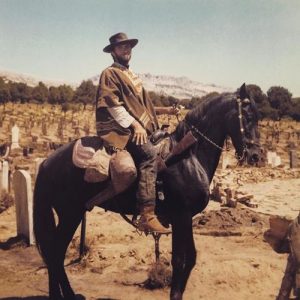
He makes sure his squire, Egg, feeds and waters them every day, and after a long ride, brushes and washes down. When one sadly dies, he buries it and later recalls memories of it.
As with any of your pets, horses require caring for, and a neglected horse is one that will suffer injuries, grow fatigued, and die.
There are other benefits to fleshing out your four-legged means of getting from A to B. A character-building a relationship with a horse, or any pet for that matter is a great source of empathy.
Characters considerate towards others tend to be likeable. Take Blondie from The Good, the Bad, and the Ugly. He’s a killer, but we’re drawn to him because, other than being cool as fuck and a mean shot, he respects and cares for his horse.
It’s a possible source of conflict too. If a horse your reader has grown attached to is at risk of harm, or heavens forbid is harmed (you cruel bastard), the reader feels it too. Just look at Black Beauty.
If You’re New To Horse Riding, You’re Going to Fall
Riding a horse is a skill that requires a lot of practice. A lot of practice.
Not only does the horse have to be well trained to handle a rider, but the rider must also understand how to ride the horse.
A character with no experience or knowledge of riding would be unable to jump on a horse and ride away to safety. Convenient yes, realistic no.
You don’t have to go through the ins and outs of learning how to ride a horse in your story. That’d be boring. Just acknowledge your character is training and improving.
A few things they would learn for instance:
- Lightly squeezing the horse’s sides with their legs to get it to walk.
- Squeezing again to set it into a trot.
- Or to make the horse stop, lean back and pull on the reins.
While falling off a horse can potentially lead to serious injury—another source of conflict—it also makes for great entertainment. Who doesn’t enjoy a bit of schadenfreude?
Each Horse Has Its Own Personality
All animals tend to have their own personality: belligerent, curious, nervous, friendly.
Featuring this in your stories not only gives it more life but also presents an opportunity for you to build connections between your characters and their steeds.
You may have a character who simply does not get along with their horse, which nips at him, rears up, kicks out, and runs off.
Or you may have a character like Aragorn who whispers sweet nothings in their ears and bends them to his will.
When it comes to fantasy horses, again you have the freedom to develop this as much as you want. Could you have more advanced mounts that can communicate in some form? Fantasy writing is all about freedom.
How Do You Describe A Fantasy Horse?
The world of horses is a detailed one, and taking advantage of those details will, as George RR Martin has proven, make your stories even more immersive.
The colours of horses are perhaps their most captivating aspect. Below, you’ll find a few different types of brown horse, but as any horse lover will know, these majestic animals can come in all manner of shades. A white horse is a common sight in fantasy, and a few times I’ve come across a blue horse. The beauty of the genre is that you could literally make them any colour you want.
Here are a few words to describe the colourations and breeds of horses:
Bay: a horse ranging in colour from light reddish-brown to dark brown with black points, these points being the mane, tail and lower legs.
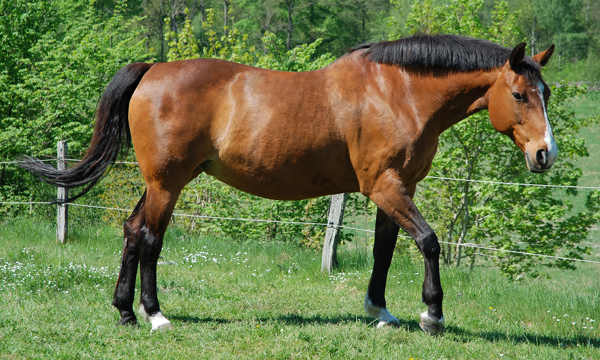
Chestnut: similar colour to the bay, though lacking any black points.

Buckskin: a lighter colour of the bay horse, though maintaining the black points.

Pinto: multi-coloured with patches of brown, white and/or black. The black and white variation is known as a piebald, a breed which features in A Song of Ice and Fire—Pod’s old piebald rounsey.
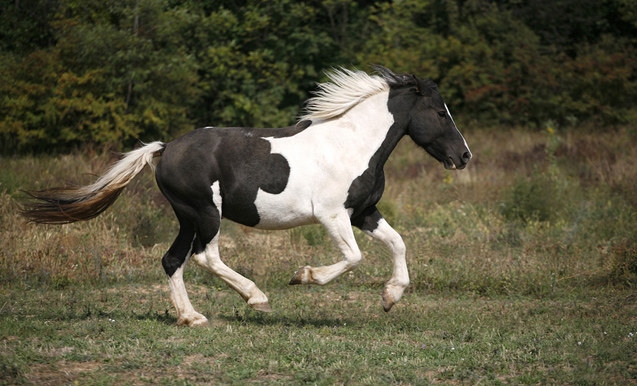
These are but a few; there are tons more for you to discover. And of course, when it comes to fantasy horses, you can run absolutely wild with the colours, manes, tails and any other feature.
Fantasy Horse Name Generator
Select Race
- angel
- cavePerson
- darkelf
- demon
- dragon
- drow
- dwarf
- elf
- fairy
- gnome
- goblin
- halfdemon
- halfling
- highelf
- highfairy
- human
- ogre
- orc
Coming up with names is always tricky, but what about fantasy horse names? Some writers may skip over this altogether. However, if you think of any pet you’ve had, how many of them haven’t had names? Horses are no different. It’s human nature to put names to things, animals included.
There are lots of different methods you can adopt to give you some horse name ideas. You could look at famous horses or famous fictional horses to help start you off.
If you’re going down the more entertaining route, you could look at racehorse names. Some are hilarious.
Films often feature horses too. Look at Black Beauty for instance. You could also look at the likes of Disney horses too—there are loads of them.
And if you still need a hand, check out my fantasy horse name generator. It creates free and unlimited names for all types of races and characters, such as orcs, elves, humans, demons and many more.
My guide on naming fantasy characters and places might come in handy here too.
More Fantasy Writing Guides
Thank you so much for reading this guide on fantasy horses. Below, I’ve included some other relevant guides you might find useful.
- A Guide to World Building
- How To Make Fantasy Armor
- Great Examples of the 5 Senses In Writing
- Archery and Fantasy: A Guide
- A guide to creating a fantasy map
- Learn more about the fantasy races that JRR Tolkien came up with
- 4 Easy Ways To Begin Writing A Novel
- What Is Foreshadowing In Writing?
Join An Online Writing Community
If you’d like more help and support with your writing or even just want to discuss a few ideas with like-minded folk, why not join my writing group? Just click the button below and you’ll gain access to an exclusive group where you can share your writing in confidence to get crucial feedback, discuss ideas and make friends!
If you need any more help with the process of creating a fantasy horse, please don’t hesitate to contact me.
- 5 Tips to Help Your Child Learn and Succeed at Primary School - February 26, 2024
- The Advantages Of Using An AI Essay Typer Alternative - February 14, 2024
- Advice On Getting Help With Your Homework - January 26, 2024

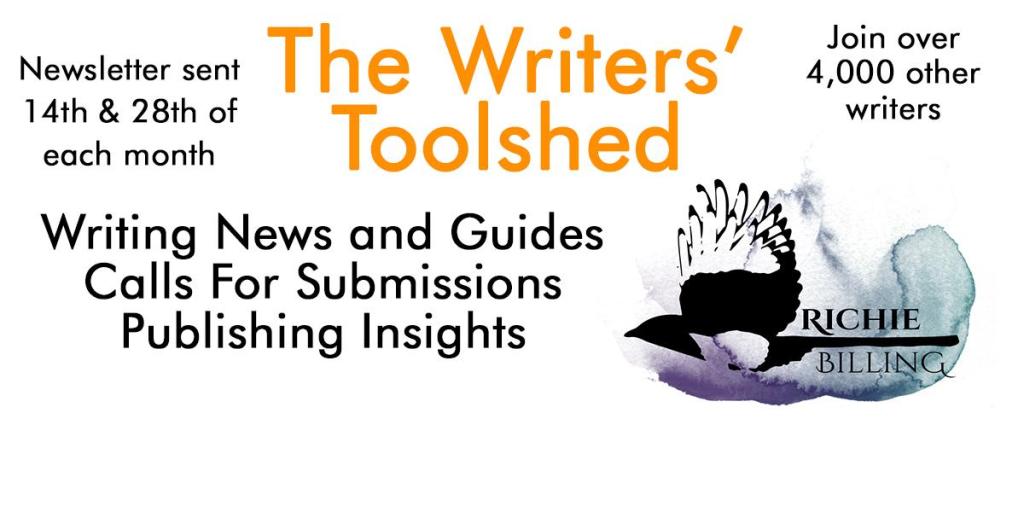
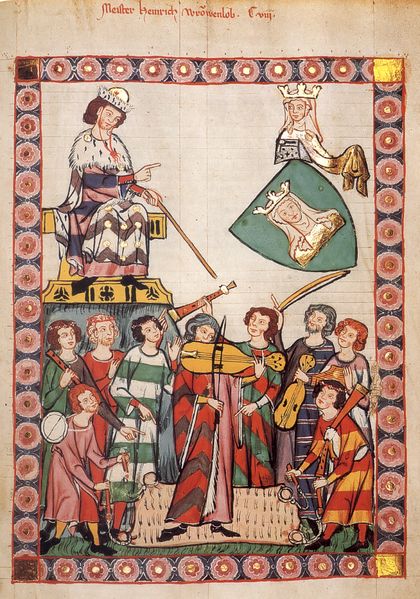
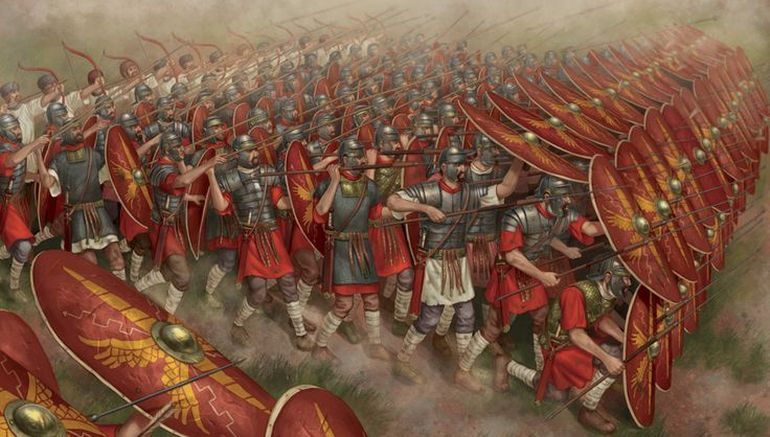

Reblogged this on s a gibson.
Thank you! Glad you found it useful!
One of my characters is a Paladin of the Ancients Oath.
“Find Steed” results in a Fae creature coming to be your steed and can take a form listed, or one approved by the GM.
I picked the Elk. =)
On my phone is a recording of that eerie keening cry they make, which I play before charging into battle…. on a battle elk.
Pingback: The Trusty Steed in Writing - Authors Community
Pingback: A fantasy writer’s guide to … Castles and Keeps: part one – Richie Billing
Pingback: The Trusty Steed – Richie Billing | Christy Jackson Nicholas, Author and Artist
Thank you for sharing!
Reblogged this on Visions of Fantasy & the Future and commented:
I didn’t use horses in Wings of Twilight for one simple reason: I forgot until I was 2/3rds of the way through the first draft. Then, I decided that there was a perfectly reasonable explanation why Strom & company weren’t using them: horses and their upkeep are expensive. Strom was leading his band on a misguided, self-righteous crusade, not exactly the kind of thing that would leave them rolling in dough.
Much to the chagrin of one of my editors, I had the characters acquire mounts in Scars of the Sundering, though. It was like introducing a whole new slew of characters, and since the traveling groups in that series were rather large, that meant a lot of tracking whose steed belonged to whom.
Pancras acquired Stormheart, a blue roan stallion
Gisella rode Moonsilver, a white mare
Delilah acquired Fang, a nailtooth (kind of like a rideable velociraptor)
Kale acquired Blackclaw, a nailtooth
Kali acquired Taavi, a nailtooth
Edric rode Yaffa, a pony
Qaliah acquired Comet, a piebald gelding, named after the Comet the Wonderhorse from the Adventures of Brisco County, Jr.
Lord Fenwick rode Shadowmane, a black stallion
Valora rode Quincy, a dwarven battleboar (so named because I thought it was funny)
In my next World of Calliome novel, horses will once again feature as mounts for the characters. I’m not quite ready to reveal the characters, but we’ll have Pepper (a dapple grey gelding), Socks (a chestnut stallion with white legs), and Silvermane (a silver dapple gelding). For you lovers of all things equestrian out there, I don’t go into as much detail as George R.R. Martin; I’m not really telling a story of a knight and his horse, plus, I write stories that are a little more fast-paced than A Song of Ice & Fire.
I love the details of your horses! It makes them seem like characters of their own. Are your stories out at the moment? I like the sound of them.
Thank you for reading and re-blogging! I appreciate it!
A worthwhile read for anyone using horses in their writing. As a former horse owner and pony mad child I would just add that some terminology is peculiar to the UK or Us, in particular colour descriptions. For example, Pinto and Buckskin are American colour descriptions – in the UK we would use Dun for Buckskin and Piebald (black and white) and Skewbald (brown and white). It’s therefore worth checking that you have the correct one for the setting of your book.
Hope that helps.
Thanks Anita! Glad to hear my sources proved accurate. Very insightful comment too! I wasn’t aware of the difference in terminology! Thanks for sharing and for reading
Reblogged this on Author Jensen Reed and commented:
Ahhh horses ❤ I can verify this is all correct. Great source if you hsve horses in your stories.
I remember seeing a booklet that circulated about writing called “On Thud and Blunder” which talked about the problems that a writer can get into when he doesn’t know what he’s talking about. One such problem is when someone says in a Fantasy story that Sir Arnold rode all day at a full gallop in plate mail. No horse could survive that.
Haha exactly! I’ll have to check that book out. An excellent title. Do you know where to get it? Thank you for reading and commenting!
http://www.sfwa.org/2005/01/on-thud-and-blunder/
Thank you!
I love horses and incorporate them into all my books, so this was a fun read. Thanks for sharing! 🙂
Thanks Charity! Delighted to hear you found it useful. I love a good horse too!
Wow, so much great information. Here’s what’s going to happen. I’m so happy to have this resource for the day when I need to write a horse. Thanks so much, Richie!
Thanks Raimey! So happy to hear you found it useful!
This made for fascinating reading, thank you. But, no mention of Bill the pony?
Thanks Drew! Delighted to hear you found it useful! Ah sadly not. Good old Bill! I’ll have to revise
Haven’t used horses much in my series yet.
What a informative article! I love horses and enjoy everything about them, except riding them!
Thank you! Delighted to hear you enjoyed it. I need to have a go at riding a horse, and by extension, falling off one too!
A fine steed can be a character all their own. Great post thanks
Thanks! Delighted to hear you enjoyed it
Excellent post! My favourite horse is the Friesian — I have two girls (yes, they’re my little girls!) who just turned four and I’ve learned so much about horses from interacting with them daily than any Googling could ever have taught me.
Ronel catching up for August Author Toolbox day DIY Booktrailers
Here’s my favorite from childhood…Tonka Wakan-the Great One. King of the Wind, SHAM, the story of the Godolphin Arabian. I love any horses, mules, or miniature horses in the Love Thrives in Emma Springs Romantic Suspense Series. Starts with the book, The Hitman’s Mistake and Big Red, the mule-okay, confession. Those are mine…if you ever get South of Seattle, WA, you can hop on my horse, Lance!